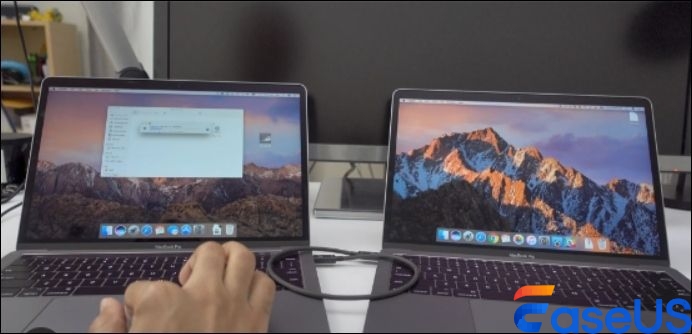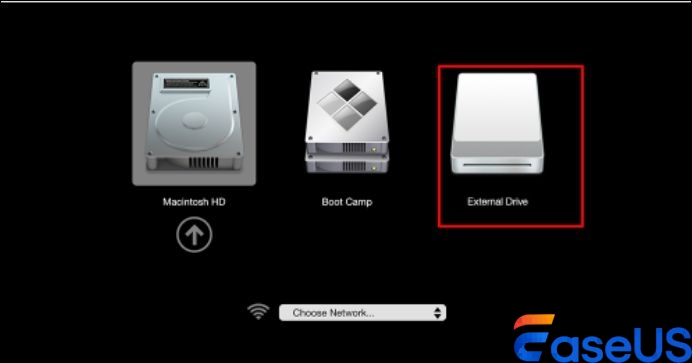Start Your Free Trial!
Sign up to our newsletter, stay updated on news and exclusive offers from EaseUS. Don't worry, if you change your mind, you can unsubscribe at any time, free of charge. We value your privacy (Privacy Policy).
Table of Contents
![]() About the Author
About the Author
![]() Reviews and Awards
Reviews and Awards
Imagine accidentally formatting the hard disk you're using with FileVault encryption. Even after trying several methods to get your data back, you still don't succeed. If this is your situation, you are in the right post to discover the fixes to use to recover your data.
Most Mac users use FileVault to secure their data from theft. You can only access data in FileVault using a password; accessing data becomes tricky without a password. Mistakes happen, hence losing data due to various scenarios. In this situation, you won't just let your data go; instead, you will begin looking for ways to recover data from FileVault hard drive. Read on!
The EaseUS Data Recovery Wizard for Mac is secure and reliable, helping you retrieve your lost data. This data recovery software for Mac recovers files of any format and size regardless of the lost scenario. So, it is handy if you have lost data due to unsafe ejection or accidental deletion.
The features are straightforward, making recovery a breeze. This data recovery software for Mac helps recover lost, missing, deleted, or even recover permanently deleted files on Mac with just a few clicks.
To get started, install the EaseUS Data Recovery Wizard for Mac and follow the steps here:
Step 1. Select the drive to be scanned
In the main EaseUS Data Recovery Wizard window, there will be a list of the drives connected to your Mac. Select the drive you need to recover lost/deleted files from, and click the "Search for lost files" button.

Step 2. Select your lost data/files
EaseUS Data Recovery Wizard for Mac will immediately scan your selected disk volume and display the scanning results on the left pane. You can sort the results to find the wanted files if you are looking for certain files.

Step 3. Recover lost/deleted data
Once you have found the desired files, preview the files and then click "Recover" to begin the recovery of your deleted/lost Mac files.

Note: If your Mac cannot be turned on or is protected by 2 or Apple Silicon Ship, you need first to boot your Mac into Recovery Mode and perform FileVault recovery again.
Please share this post to forums like Reddit or social media like Twitter to help more users facing this problem:
Target Disk Mode allows you to mount a Mac to a different Mac without a password, provided the FileVault isn't activated. Sometimes, you can't remember if it was active, but you can check whether the two Macs contain a FireWire or Thunderbolt two or three ports.
Here is the catch!
Step 1. Connect your computers.

Step 2. To start or restart the Mac, you need to mount it on the other as you hold down key T.
Step 3. A volume icon will appear on your other Mac if the procedure works.
If T2 or FileVault is activated, you will receive an enter password prompt. If you don't have another Mac to rule out whether the FileVault is enabled, it's no problem. If so, use the latest version to set up the bootable external macOS drive.
After doing that, use the following steps to boot from the external drive:
Step 1. Install the macOS startup volume on the external drive

Step 2. Plug it to a Mac that you need to start.
Step 3. Start or restart the Mac by holding down the option key until it powers.
Step 4. A formatted display showing the available startup drives will appear.
Step 5. Click to boot from that device.
Step 6. After the macOS starts, the internal drive will appear as a volume.
You will only be stuck if the macOS asks for a password to mount your internal device.
But what is FileVault, you ask? FileVault is data security software, first released with Mac OS X 17, Lion, and has been available in all the latest Mac OS versions since then. The feature encrypts data onto the Mac startup disk when FileVault is enabled. It uses a cypher algorithm to encode data to prevent unauthorized access for safety and privacy purposes.
If you lose data after you turn on FileVault encryption on Mac on your Mac drive and try to restore it using software, your software will only be able to access it once you turn it off.
Here is how to turn off FileVault encryption on Mac.
Step 1. Go to "Apple menu."
Step 2. Open "System Preferences" > "Security & Privacy."
Step 3. Select "FileVault" and click the "Lock icon."

Step 4. If asked, provide the administrator password or name and click on the "Turn Off FileVault."
Step 5. Click on the "Turn Off Encryption."
Please note that the process may take a while, depending on the data stored in the drive.
Mac file problems are endless. Your Mac may fail to permit you to access your files or even become corrupt. You may lose your data; hence, you should look for recovery methods. But with recovery software like EaseUS Data Recovery Wizard for Mac installed on your Mac, you won't panic. It has all the advanced features you need to recover data from FileVault hard drive.
Some of the frequently asked questions on data recovery from FileVault include:
You can only recover an encrypted hard drive if you have a password. The password will help you turn off the FileVault to use a software tool to recover data from the hard drive.
You can use secure software like the EaseUS Data Recovery Wizard to retrieve your data from the hard drive. The software offers straightforward and reliable advanced features to recover data in any format regardless of the lost scenario.
In logical failure cases, like a damaged or corrupted file system, it is possible to recover your data using different methods and third-party software. However, the situation becomes tricky if it's physical, mechanical, or disk damage.
Was This Page Helpful?
Finley is interested in reading and writing articles about technical knowledge. Her articles mainly focus on file repair and data recovery.
EaseUS Data Recovery Wizard Pro has a reputation as one of the best data recovery software programs on the market. It comes with a selection of advanced features, including partition recovery, formatted drive restoration, and corrupted file repair.
Read MoreEaseUS Data Recovery Wizard is a powerful system recovery software, designed to enable you to recover files you’ve deleted accidentally, potentially lost to malware or an entire hard drive partition.
Read MoreEaseUS Data Recovery Wizard is the best we have seen. It's far from perfect, partly because today's advanced disk technology makes data-recovery more difficult than it was with the simpler technology of the past.
Read MoreEaseUS Data Recovery Wizard Pro has a reputation as one of the best data recovery software programs on the market. It comes with a selection of advanced features, including partition recovery, formatted drive restoration, and corrupted file repair.
Read MoreEaseUS Data Recovery Wizard is a powerful system recovery software, designed to enable you to recover files you’ve deleted accidentally, potentially lost to malware or an entire hard drive partition.
Read MoreRelated Articles
2025 Fixed: Time Machine Won't Complete First Backup
![]() Jean/Feb 14, 2025
Jean/Feb 14, 2025
Sharing Name and Photo Not Available, Why and How to Fix It
![]() Brithny/Nov 27, 2024
Brithny/Nov 27, 2024
How to Recover Data from Another Mac in Target Disk Mode✅
![]() Dany/Feb 14, 2025
Dany/Feb 14, 2025
Mac Cache Recovery: How to Recover Deleted Cache Files on Mac
![]() Jean/Nov 27, 2024
Jean/Nov 27, 2024
CHOOSE YOUR REGION
Start Your Free Trial!
Sign up to our newsletter, stay updated on news and exclusive offers from EaseUS. Don't worry, if you change your mind, you can unsubscribe at any time, free of charge. We value your privacy (Privacy Policy).
Start Your Free Trial!
Sign up to our newsletter, stay updated on news and exclusive offers from EaseUS. Don't worry, if you change your mind, you can unsubscribe at any time, free of charge. We value your privacy (Privacy Policy).